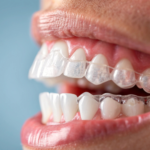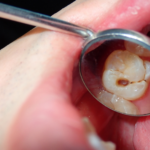Chewing gum. It’s a breath freshener, a stress reliever, and maybe even a nostalgia trigger. But what about its impact on your pearly whites? Is it a secret weapon for a sparkling smile, or a sugary villain in disguise? Let’s chew on the facts (pun intended!) to see if gum is a friend or foe to your teeth.
Sugar Rush or Saliva Saviour?
The key player here is sugar. Regular gum, loaded with the sweet stuff, feeds the bacteria in your mouth, leading to plaque buildup and cavities. That’s a no-go zone for oral health.
However, sugar-free gum with xylitol is a different story. Xylitol is a natural sweetener that actually fights against cavity-causing bacteria. Plus, chewing sugar-free gum increases saliva production. Saliva is your mouth’s natural defense system, washing away food particles and neutralizing acids that can harm your teeth. So, sugar-free gum can be a breath of fresh air (literally!) for your oral health.
Chewing Cautiously
While sugar-free gum can be beneficial, it’s not a magic bullet. Brushing and flossing twice a day are still essential for a healthy smile. Chewing gum excessively can also lead to jaw fatigue or even temporomandibular joint (TMJ) problems. So, chew in moderation and listen to your body.
The Chewing Gum Checklist
- Sugar-free is key: Look for the ADA (American Dental Association) seal of approval to ensure the gum is truly sugar-free.
- Xylitol is a bonus: Opt for gum with xylitol for an extra dose of cavity-fighting power.
- Chew in moderation: 15-20 minutes after a meal is a good timeframe.
- Brushing and flossing come first: Chewing gum is not a replacement for a proper oral hygiene routine.
Chewing gum can be a helpful addition to your oral care routine, but remember, it’s all about moderation and choosing the right type. So, chew wisely and keep that smile bright!








